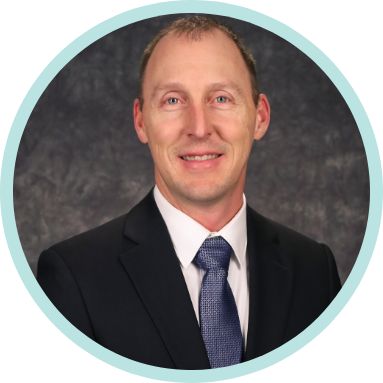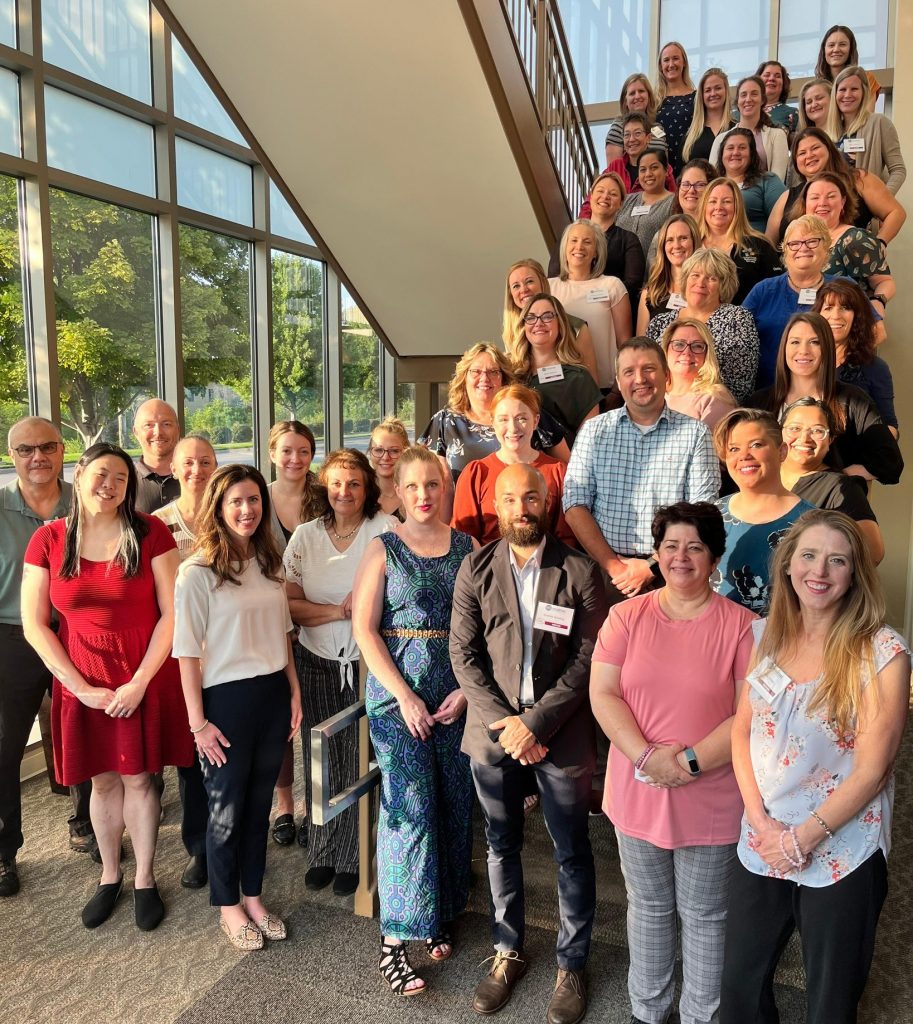What has nursing during the pandemic looked like for father of four, 28-year Army Reservist and North Kansas City Hospital trauma program manager Capt. Ray Staggs, RN, TCRN? This Father’s Day, he’s grateful to be home safe and sound with his family after his unit was deployed to a COVID unit at Stamford Health in Stamford, CT.
A Q&A with Trauma Manager, Army Reservist and Father of Four, Ray Staggs, RN, TCRN
What was your situation when you were called up to assist with the pandemic?
It was the end of March, and we had all been watching the news as New York was in crisis mode with a ventilator shortage and not enough staff. My civilian job is managing trauma, and I was fully confident my staff at North Kansas City Hospital would step up in my absence.
My kids knew what was going on, that people were getting sick, and they knew that dad was going to go help the hospitals and patients that were struggling. They are strong kids, and I think they’re proud their dad’s an RN and that he’s in the Army. My wife, being a military spouse, knows the drill, and, as always, handled everything at home wonderfully. She’s a full-time dietitian, and then she had to come home and home school our two youngest at night. I could not do my job with the military without her support.
What was your assignment?
My unit, the 325th Field Hospital, was assigned to staff one of the COVID units at Stamford Health in Connecticut. We’re an Urban Augmentation Medical Task Force (UAMTF) supporting the 811 Medical Brigade. UAMTF’s provide high-end medical capability to augment hospital staffs and support FEMA medical stations. More than a dozen UAMTF’s have been mobilized across the U.S. during the pandemic.
There were 85 of us— including RNs, LPNs, medics, preventative health staff, dieticians, and psychiatrists. We were joined by Navy, U.S. Air Force and regular Army service members at Ft. Dix in New Jersey before going on to Stamford. From the time I arrived at our in initial staging center in Independence, MO, to the day we hit the hospital floor, just four days had passed.
What was it like when you arrived at the hospital?
Stamford Health is a Level II Trauma Center, an advanced Primary Stroke Center, and is Magnet recognized. We were met by staff as soon as we arrived with open arms. All of their staff were extraordinary and supportive.
When we arrived, there were 140-160 COVID patients at the hospital. Their ICU was overflowing with everybody on ventilators, and there was a makeshift ICU in the PACU. There were 28 beds in the unit we were on, with a lot of elderly and nursing home patients, so we were doing total care. We ended up working six 12-hour shifts a week.
You had to don all personal protective equipment (PPE) — your shield, your N-95 mask, your gown— you had to wash your hands, and you had to wipe off your mask every time you came out of the room. You had to organize, and we tried to do a lot of cluster care. We did vitals every 4 hours and if the patients were having oxygen troubles, they didn’t stay with us very long. They’d end up going to the ICU or the step-down.
How did nursing expertise play a role in patient care?
With the COVID patients, we had a lot of oxygen issues with patient emergencies. So, we would move them from a nasal cannula up to a high-flow oxygen mask, and we would not put humidity on it. We would do everything we could for sterilization. Once they were not able to maintain adequate oxygen saturation levels with their mask, we would transfer them to another level up, like the step-down, before they would go to the ICU, because we tried to do everything we could to not intubate these patients. In a more typical, non-COVID situation, we would place the patient in bi-pap until they were able to breathe better or require mechanical ventilation. COVID changed all of this.
For the critical care nurses and the ER nurses who had a good expertise with this kind of nursing, they adapted quickly, while it was really hard for some of the non-certified, non-critical care nurses to get comfortable with the choices we were faced with and that were different than in the non-COVID world. It was tough, but as usual, healthcare providers team up, share experiences, and match weaknesses with strengths to provide one good team. All of the Army combat medics, Navy corpsmen and Air Force Airmen were outstanding throughout this mission. It was a nurse’s dream to have so much help on a medical unit.
How did your military and trauma nurse experience prepare you?
I’ve been in the military for 28 years and have been a nurse for 17 years. I started out as a critical care nurse, and in 2007, I was deployed as an ICU nurse to Iraq as part of Operation Enduring Freedom. I don’t think I would be as good of a trauma nurse as I am now if I had not had my experience in Iraq working at one of the busiest trauma centers in the world. It was really an eye-opener that good trauma care really does make a difference in saving lives. When I returned, I decided all I wanted to do was trauma.
When the Trauma Certified Registered Nurse (TCRN) came out, I knew I wanted to get it so I could validate my knowledge and also because it was important to me that my colleagues and other people I work with trust my knowledge. Being a TCRN is another way to validate that you’re not only a trauma nurse, but you’re an expert trauma nurse. It is something to be proud of.
How was it coming home?
By the time we left 7 weeks later, I think they were down to 20 or 30 COVID-positive patients in the hospital. It was nice to see a big change like that in a small amount of time. I completed my 14-day quarantine in early June, and I’m so glad and grateful to be back with my family. Luckily, they were all safe and everything was fine.
I always knew I wanted to be a parent, back before I even was a parent. You worry about your kids when you are gone. If something happens you rely on your family and your neighbors to support you, because reservists are not surrounded by military families such as the active duty, but we still have a support system. I was able to talk with my kids by phone often, and they would typically say I’m fine, we’re good and then they’d get off the phone and go back to the Xbox.
When something like this is going on, we call it selfless service. We basically get our mindset that this is what we’re going to do, and our families and our employers support the mission. That doesn’t mean it’s easy, but it is what we continuously train for. All front-line workers are heroes during this pandemic, not just the military. I think rising to the occasion is just human nature. Everyone worries and it’s hard, but we all know I’m a nurse and a soldier, and this is what I train and prepare for.

